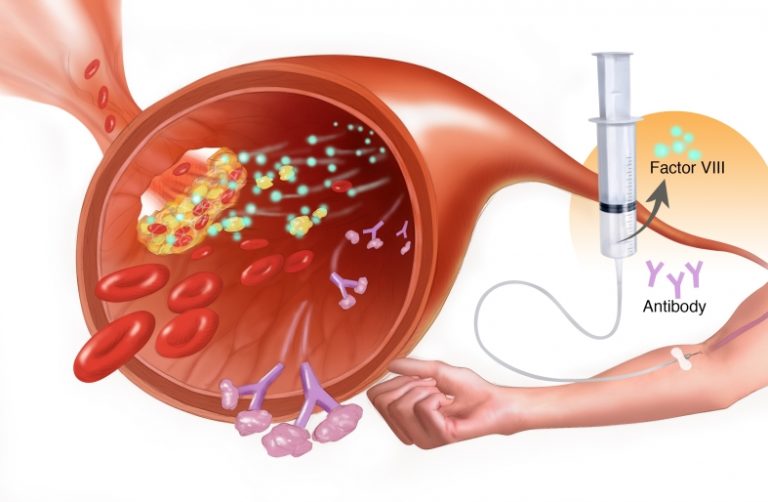A complication that poses great difficulties in the management of patients with hemophilia is the appearance of factor VIII inhibitors. These inhibitors are usually immunoglobulin G (IgG) antibodies to factor VIII. Factor VIII inhibitors (antibodies) develop in patients who have received multiple factor VIII replacement therapy. About 5% to 10% of patients with hemophilia have factor VIII inhibitors. The increasing use of factor VIII concentrates increases the risk for development of factor VIII inhibitors; 20% to 30% of severe hemophiliac patients are affected.
About 40% of patients with hemophilia with inhibitors are low responders. Patients with hemophilia whose inhibitor levels rise with additional contact with factor VIII concentrates are called high responders; this situation is found in about 60% of patients with hemophilia with inhibitors. The medical management of patients with hemophilia is determined by the absence of inhibitors and low or high responder status.
Read More About: foumovie
Patients who are most difficult to manage are high responders.2,8, Low responders with minor bleeding can be treated with human factor VIII concentrates. The dosage for these patients is larger than for those without inhibitors. Activated prothrombin complex concentrates may be used if needed in this group of patients. Also, porcine factor VIII can be used if low levels of cross-reactivity with this agent occur.
For surgical or invasive procedures in low responders, any of these treatments may be used.2 with the development of recombinant activated factor Via (NovoSeven), an effective treatment became available for the management of patients with hemophilia who are high responders in hemophilia B (Christmas disease), and factor IX is deficient or defective. Hemophilia B is inherited as an X-linked recessive trait (F9 gene).11 Factor IX levels below 10% have been reported in a few women. Similar to hemophilia A, the disorder manifests primarily in males.
Lastly comment
Severe disease, in which affected patients have less than 1% of normal amounts of factor IX, is less common than in hemophilia A. Clinical manifestations of the two disorders are identical. Screening laboratory test results are similar for both diseases. Specific factor assays for factor IX establish the diagnosis. Purified factor IX products (see Table 25.3) are recommended for the treatment of minor and major bleeding. Recombinant factor IX is now available for clinical use.2
Visit The Site: khatrimaza

